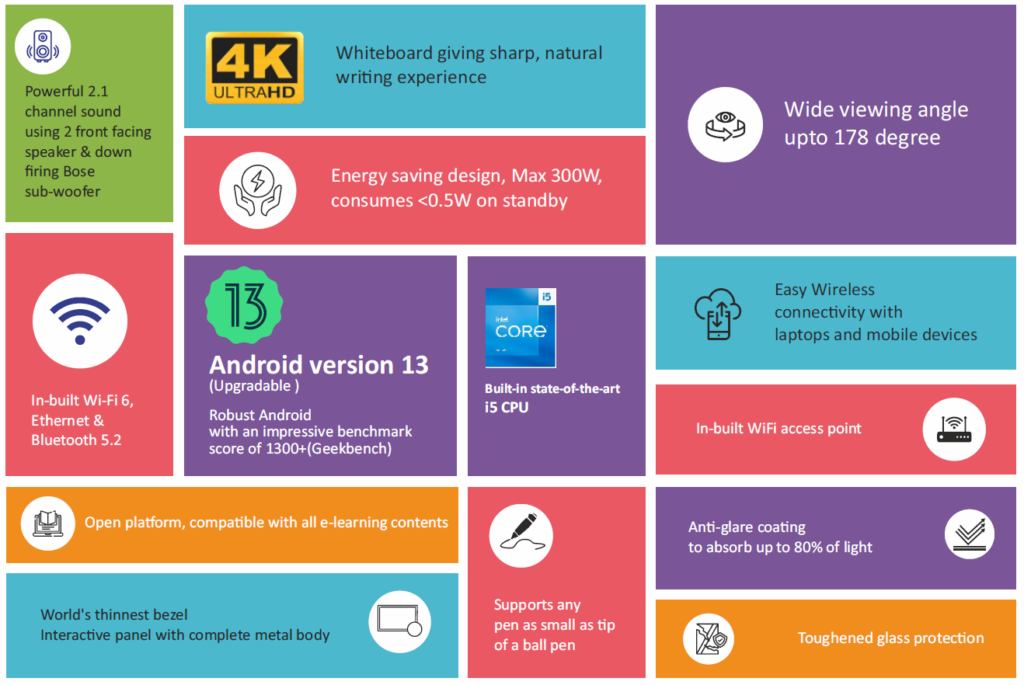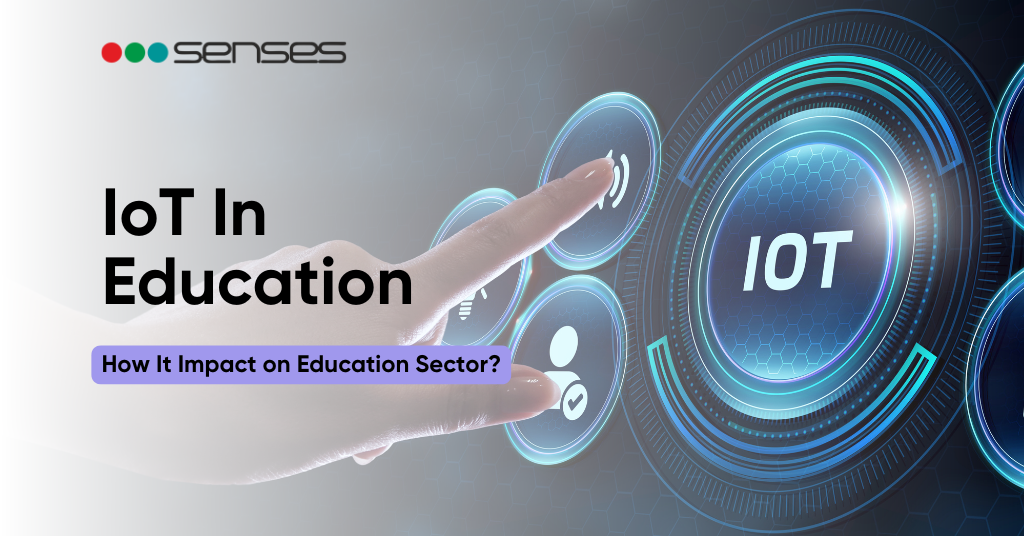Imagine a highly interactive classroom where students use smart devices, teachers manage attendance with a single touch, and parents regularly receive updates about their child’s progress.
Also, imagine the classroom where students get personalized learning experiences even though they attend classes from the comfort of their homes.
You do not need to imagine this because it is not the future anymore. It is the present, which is possible just because of IoT in education.
IoT in education is rapidly transforming the education system in a positive way. If you are unaware of the magic of IoT or want detailed information about it, this blog is for you.
This article will discuss IoT and how it transforms the education sector and enhances the learning experience. By the end of this article, you will gain a clear understanding of IoT’s applications in education and the numerous benefits it brings.
What is IoT in Education?
The Internet of Things (IoT) refers to the network of interconnected devices that collect and exchange data through the Internet. In education, this means tools like smartboards, connected tablets, and wearable tech, creating an enriched and interactive environment that elevates teaching and student engagement.
IoT transforms education in a significant way, eliminating the barriers that traditional education has. IoT brings a new level of personalization and inclusivity in education, automatically empowering students and teachers.
However, integrating technology is a tough and challenging task. You can utilize the SAMR model to smoothly incorporate IoT in your classroom. It will break down the entire technology integration process for you, illustrating how it can enhance your teaching experience step-by-step.
Applications of IoT in Education: How IoT is Reshaping Education
Now, let’s understand how IoT transforms education and its various applications in the education sector. The application of IoT in education will tell you the power of modern technology and its importance in contemporary education.
Smart Classrooms
Smart Classrooms are technology-enabled classes that use intelligent boards, tablets, and other interactive tools. These tools play a vital role in making lessons highly interactive and engaging.
For example, during a history lecture, you can use a smartboard to showcase the timeline of events, enabling students to explore events in detail with a simple touch. This way, technology makes learning fun and exciting.
Due to the emergence of AI tech, tech tools are becoming more powerful. For instance, SENSES Pro, with its built-in AI features, simplifies tasks such as seamless lesson planning and delivering real-time feedback.
Remote Learning
IoT is making learning more and more flexible. It enables students to attend classes from the comfort of their homes using their laptops or smartphones. Cameras and sensors make online learning feel just like a physical classroom. Also, IoT is taking learning beyond the textbooks.
Now, students have access to a vast amount of information just at their fingertips. Students can watch videos, visit digital libraries across the globe, and meet experts virtually to take the learning process to the next level.
Due to all these reasons, the demand for online or remote learning is increasing rapidly. According to the report published by Coursera, a leading online education platform, online course registrations consistently show an upward trend.

(Image Source: Coursera)
Personalized Learning
Every class consists of students from diverse backgrounds and varied learning styles. Some students learn just by reading the content, some by watching videos, and some by creating notes in pictorial form. Also, the learning speed differs from student to student. Matching this wide learning style was not possible for traditional learning. Apart from this, there were language barriers as well.
However, IoT quickly solves all these problems and provides a high-quality, personalized learning experience. Smartboards allow teachers like you to translate notes in multiple languages in real-time, eliminating the language barrier. You can also display videos & images to make learning more exciting and personalized.
Campus Management
IoT enhances the learning experience and improves school or college operations. For example, apps like OneTap and Alora automatically track your students’ daily attendance. Using IoT, you can also automate tasks like the admission process, security management, and staff monitoring.
It has also become straightforward for teachers to stay in touch with parents to inform them about their child’s behavior and performance in school.
From day-to-day management to long-term resource optimization, IoT is helping educational institutions operate more brilliantly and efficiently.
Must Read
Assistive Technology
IoT makes education highly accessible and inclusive, especially for physically and geographically challenged students. For example, some educational apps can convert study notes into audio form, which allows blind students to understand concepts and get high-quality education.
Similarly, some tools convert audio into text format in real-time, helping hearing-impaired students cope with the same learning pace as other students.
One of the best things about IoT is that many educational apps and tools are entirely free to use, which provides excellent financial relief to students. In short, IoT education helps everyone.
The document published by the Ministry of Electronics and Information Technology on IoT Policy clearly shows that GoI promotes the IoT in education. The government is taking this approach because IoT can make India a world leader by taking advantage of its demographic dividend.
Benefits of IoT in Education: Why IoT is a Game-Changer for Education

- Enhanced Learning Experience
IoT tools like Interactive panels improve the learning experience by making it engaging and interactive. Tools simplify explaining complex concepts, eventually improving students’ academic performance.
- Data-Driven Decisions
IoT can provide detailed and accurate data on student performance, staff attendance, and other essential factors. This data helps school/ college administrators to make the right decisions at the right time, improving the overall quality of learning operations. Data-driven decisions streamline the workflow for teachers and make day-to-day tasks smoother.
- Cost Saving
IoT optimizes resource utilization, from energy savings with intelligent lighting to reduced administrative overhead through automated systems. It also saves a lot of money for students on transportation and accommodation, making education much more affordable.
- Inclusivity
As mentioned above, IoT helps incredibly physically and geographically challenged students. Both types of students can attend classes anytime and anywhere. Also, IoT can translate study notes and video lectures into students’ mother tongues in real-time. Therefore, in modern education, resources, language, and location are no longer limitations.
- Collaborative learning
Due to the IoT, it has become effortless to collaborate with students from various cultural and geographical backgrounds. Students can collaborate with foreign educational institutions to get detailed insights into various concepts.
Collaborative learning has made international conversation very easy. These global networks are helping students grab work or business opportunities available globally.
Why SENSES Smartboards are the Ideal IoT Solution for Modern Education
Among IoT-enabled tools, smartboards stand out as game-changers.
SENSES Intelligent Interactive Panel brings classrooms to life with features like real-time collaboration, AI-driven analytics, and seamless integration with other devices.

With its advanced features, you can easily translate your lessons into more than 20 Indian languages in real-time, making education more accessible and inclusive.
Some of the critical features of SENSES include –
- Dual Operating System (Windows & Android)
- 50,000 hours life cycle
- 3D Model Insertion
- Math recognition & solver
- 4K Ultra HD display
In the last 10 years, SENSES has transformed more than 70,000 classrooms into modern AI-driven classrooms.
If you also want to build a powered classroom with SENSES, Schedule a FREE DEMO right now.
A demo of the panel will be arranged at your place to display its features.
Frequently Asked Questions (FAQs)
IoT enhances learning by connecting devices like smartboards, tablets, and wearables. It helps improve engagement, personalize lessons, and automate tasks like attendance and performance tracking for teachers and students.
IoT devices include smartboards, connected tablets, wearable fitness trackers, IoT-enabled projectors, and smart cameras. These devices improve interactivity, monitor progress, and make learning more engaging and efficient.
An intelligent classroom uses technology like IoT devices to create an interactive and engaging learning environment. It includes tools like smartboards and connected devices to simplify teaching and improve student participation.

